Michael Elliott's Blog, page 13
January 13, 2022
My Favorite Album
I sat down with host Jeremy Dylan to talk all things Bring the Family, Have A Little Faith, and John Hiatt.

December 31, 2021
The Best Albums of 2021
Here they are, the year’s albums that kept me coming back for more.
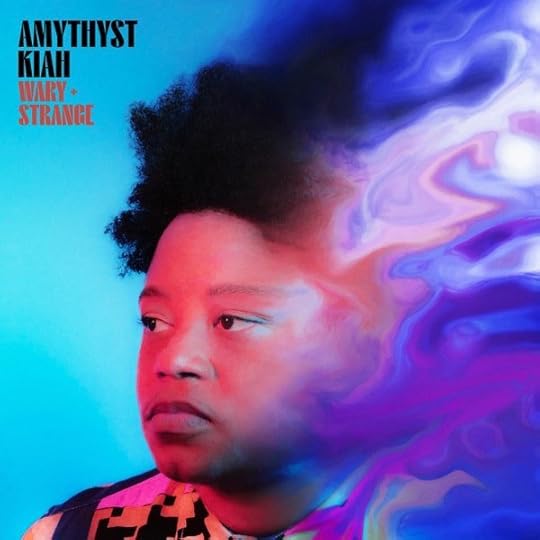


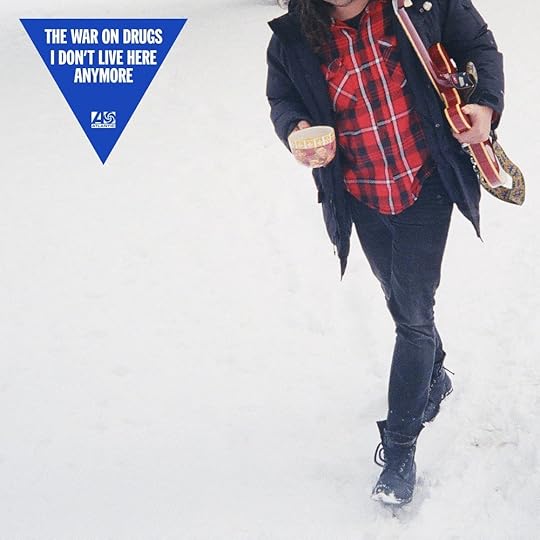
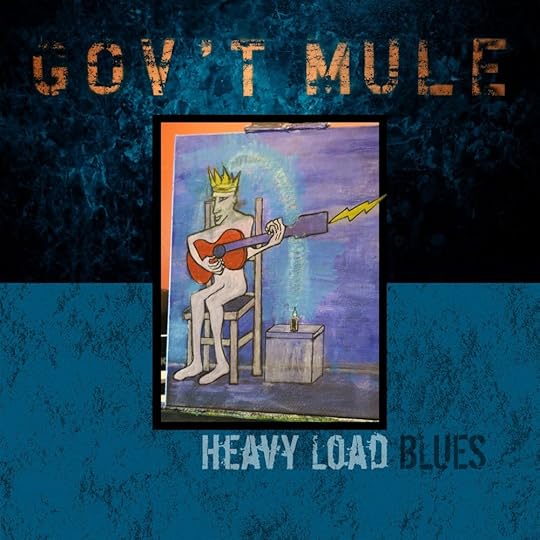
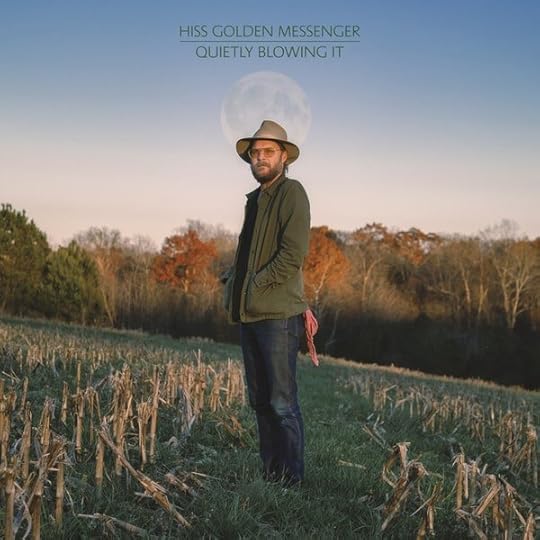
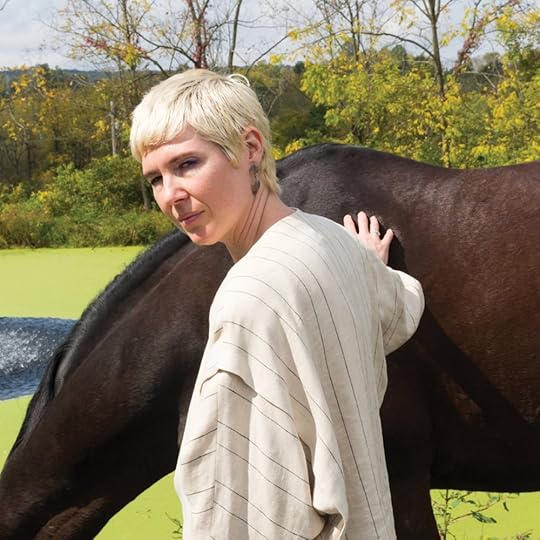
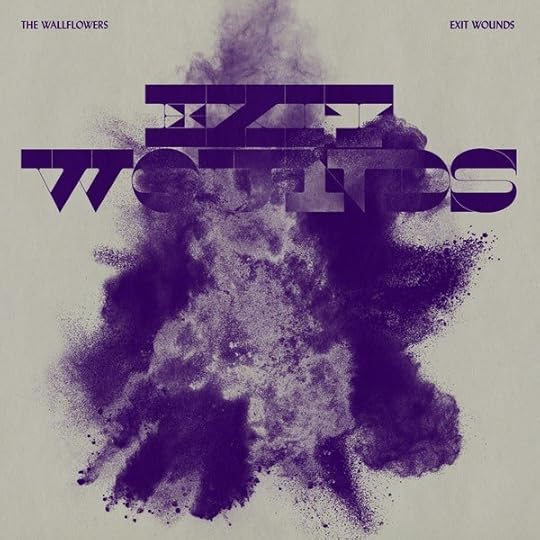
[image error]
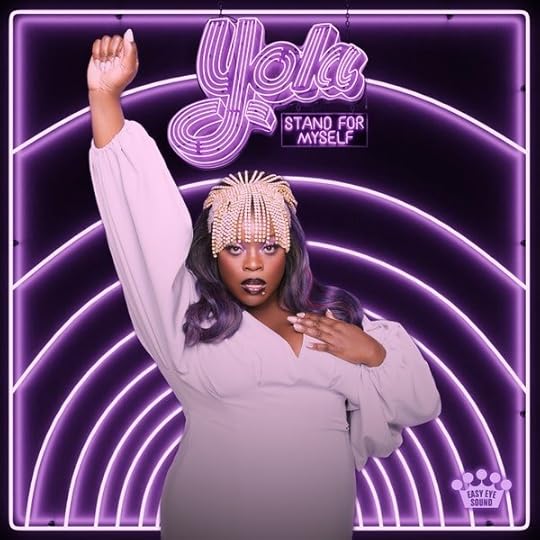
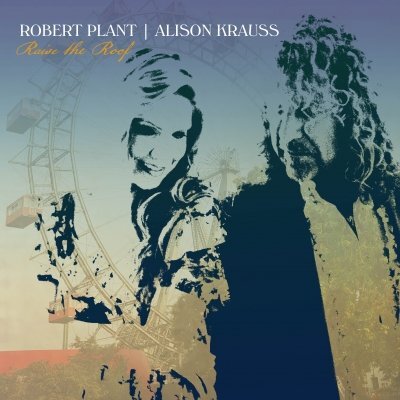
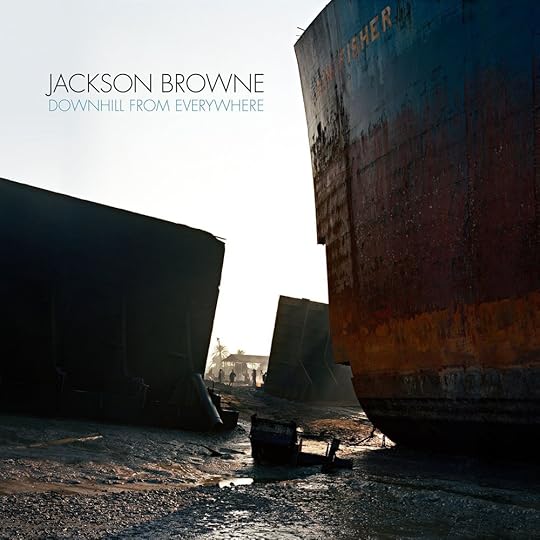
15. Amythyst Kiah - Wary + Strange [image error]
This is an album that’s as powerful as it is inevitable. From the anthemic blues of “Black Myself” to the lonesome wail of “Tender Organs,” the Tennessee guitarist/vocalist roars, howls, testifies, and plows through eleven songs that celebrate the human condition both personally and universally.
14. Maggie Rose - Have A Seat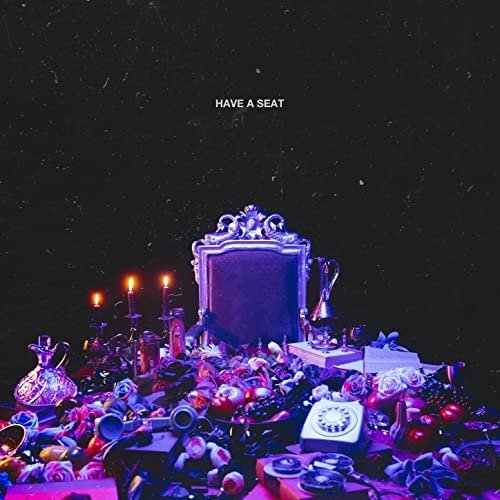
Dripping with soul throughout, Have A Seat receives its power from its sheer audacity. Recorded at the venerable FAME studios and produced by the Alabama Shakes’ Ben Tanner, Rose sounds perfectly at home in her surroundings, channeling everyone from Dusty Springfield and Bonnie Bramlett to Beyonce. Its performances are as intimidating as they are inviting.
13. Jackson Browne - Downhill From Everywhere [image error]Jackson Browne’s voice wraps around you like an old warm blanket that you forgot you had but once felt again, you remember how comfortable it made you feel. Downhill From Everywhere is an exercise in nostalgia with the conscience of the present.
Read my original review for PopMatters here.
12. The Wallflowers - Exit Wounds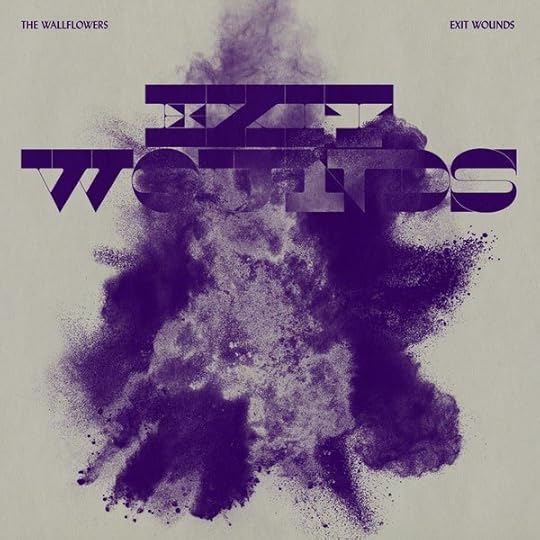
A welcome return by one of the last great rock bands, assisted most capably by the incomparable Shelby Lynne. Jakob Dylan and crew offered up another reason in 2021 to not be foolish enough to count out rock’n’roll.
11. Rosali - No Medium
Rosali returned in 2021 with another beautiful collection of songs that feature her warm, emotive, and powerful vocals. Highlights abound, but the dreamy “Whisper” and the heavy, plodding “Pour Over Ice” seep under the skin and take up residence longer than expected.
10. Robert Plant & Alison Krauss - Raise the Roof [image error]Almost fifteen years later, Raise the Roof picks up where Raising Sand left off, but it’s more than a mere sequel. The trio of Plant, Krauss, and producer T Bone Burnette sound even more comfortable around each other and have settled into one of the great collaborations of the 21st century.
9. Gov’t Mule - Heavy Load Blues
With all that’s happened in the world over the last few years, the blues proved it’s not going out of style anytime soon, and Gov’t Mule decided it was the perfect time to remind us that it’s mostly about celebrating resilience.
Read my original review for PopMatters here.
8. Lilly Hiatt - Lately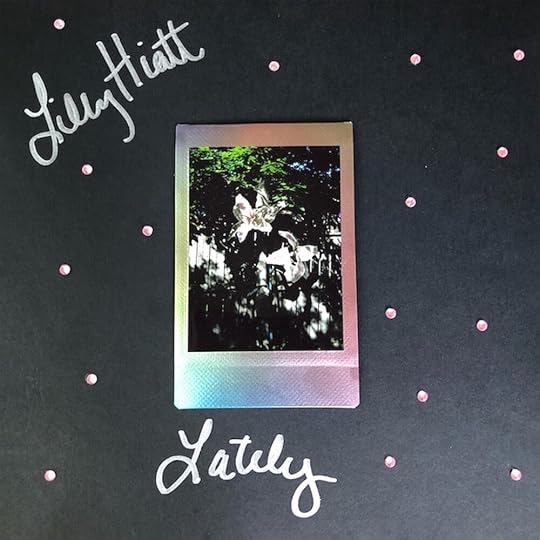
ately could be heard initially as the sound of isolation. Its guitars, steel and otherwise, are awash in reverb, giving the entire affair a dreamlike soundscape. Hints of ‘90s post-grunge appear throughout, riding under Hiatt’s captivating vocals.
Read my complete write-up here.
7. Yola - Stand For Myself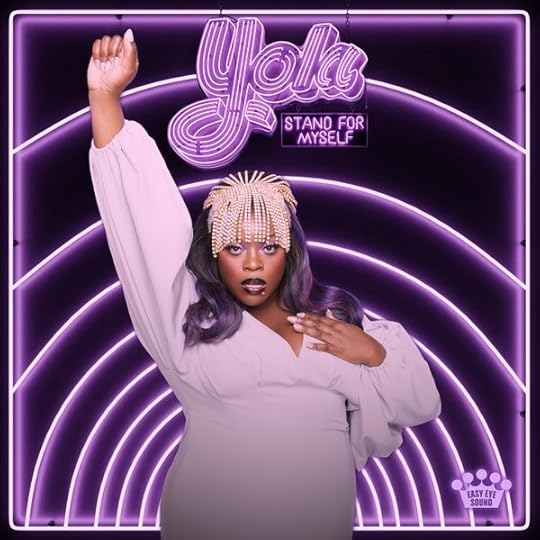
The consistency and diversity on Stand For Myself, Yola’s sophomore full-length, is nothing short of breathtaking.
Read my entry for it on PopMatters top 75 albums of the year here.
6. Hiss Golden Messenger - Quietly Blowing It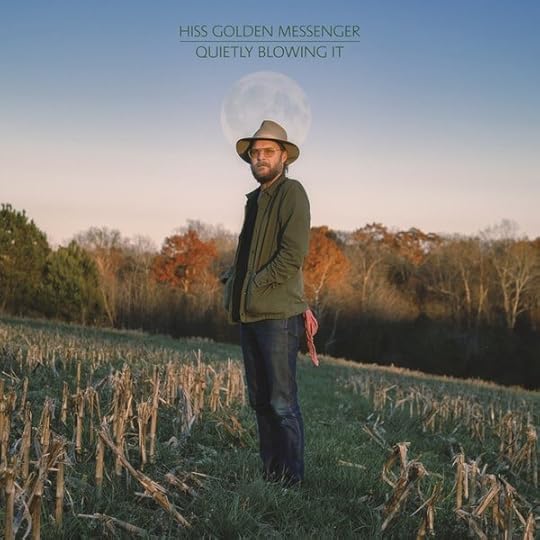
M.C. Taylor continues his ascent as one of the most talented songsmiths and craftsmen working today, and for proof, look no further than right here.
5. Margo Cilker - Pohorylle
The biggest surprise of 2021 belong to Oregon native Margo Cilker, who single-handedly seems to be reclaiming the soul, beauty, and subtle power of folk music - getting it out of the coffee shops and placing it back in the hearts and on the tongues of those who may have forgotten how much this music matters.
4. James McMurtry - The Horses and the Hounds
A new James McMurtry album is always a cause to celebrate, but when its this good, there just isn’t enough balloons and party favors to match its beauty and intensity.
Read my original review for PopMatters here.
3. John Hiatt with the Jerry Douglas Band - Leftover Feelings [image error]The same year the legendary singer-songwriter’s first biography was published (hint hint), he teams up with the inimitable Jerry Douglas (and his top-notch band) and proves he still has it. By “it” I mean a lyrical touch that still no one can match.
2. Aaron Lee Tasjan - Tasjan! Tasjan! Tasjan!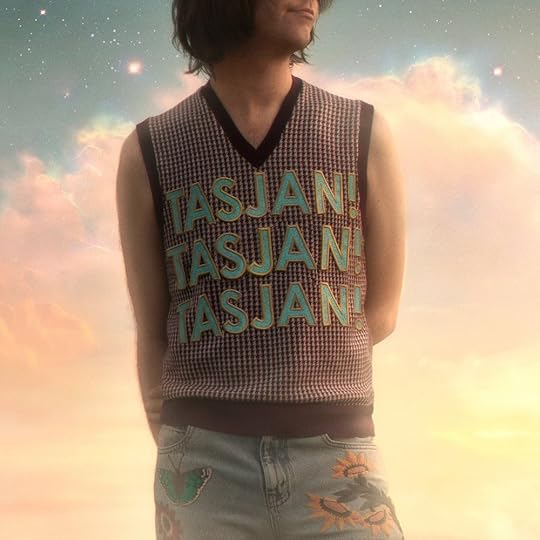
Hands-down, the most dreamlike and hook-heavy album of the year belonged to this guy. The tunes will roll around in your head long after you’ve gone about your day - or week - or month, for that matter.
Honorable Mention: Various Artists - Be Good To Yourself [image error]Legendary North Carolina musicians gathered together in 2021 to produce an incredible album that helps provide musicians access to mental health care and substance abuse treatment. Not only that, it’s inarguably the best compilation of the year.
The War On Drugs - I Don’t Live Here Anymore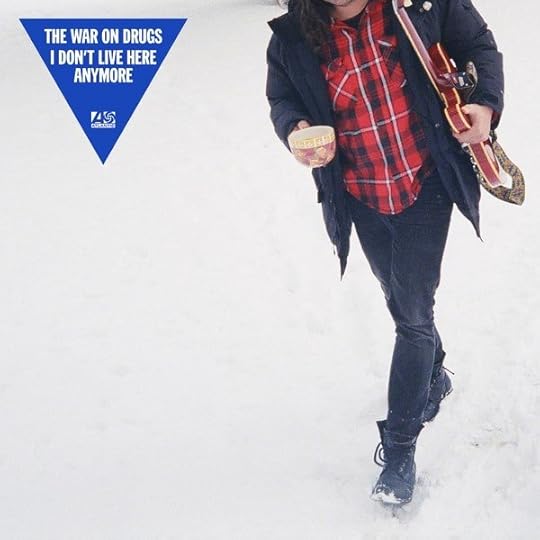
Quite simply, this is the album that I’ve played more than any other this year. I Don’t Live Here Anymore doubles down while at the same time expanding Adam Granduciel’s driving yet dreamy arrangements with lyrics that approach the melancholy and the celebratory with equal zeal.
Read my entry for it on PopMatters top 75 albums of the year here.
December 18, 2021
Set Lusting Bruce
Host Jesse Jackson was kind enough to invite me on his podcast to talk John Hiatt and Bruce Springsteen.

December 11, 2021
You, Me, And An Album
I had a great conversation with Al Melchior about John Hiatt’s Bring the Family, and about Have A Little Faith: The John Hiatt Story, of course.
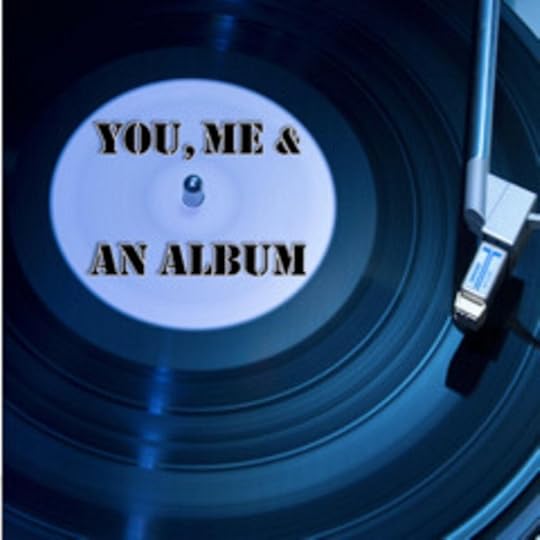
Listen on Spotify, Apple, or wherever you listen to podcasts!
November 18, 2021
In Conversation With David Menconi
Video footage of the “In Conversation With” event presented by Page 158 Books on November 16th, 2021 promoting Have A Little Faith: The John Hiatt Story.
Signed copies are available to order directly from Page 158 Books by clicking this link. Just in time for the holidays!
November 14, 2021
Growin’ Up
How Bruce Springsteen is tied to my birthday with three landmark compilations spread over three decades.

The cover may be a little worse for wear, but the contents of my old box set are still in great condition.
I turned 16 on November 14, 1986. By then, I’d been a fan of Bruce Springsteen for at least five years or so. The first song I remember hearing on our local rock station (WQDR at the time) that had his name attached to it was “Born To Run.” It wasn’t unlike those big Phil Spector productions of girl groups I’d heard over the years by the likes of the Ronettes and the Crystals, though I didn’t consciously make the connection at the time. I was also exposed to “Thunder Road,” “Jungleland,” “She’s the One,” and “Tenth Avenue Freeze-Out,” all from the Born to Run album, which ended up being the first record of his I owned.

WQDR gave me an education on The Boss before I ever bought anything of his, however: “Badlands,” “Spirit in the Night” (which I at first thought was Van Morrison), “Rosalita (Come Out Tonight),” “Cadillac Ranch,” “Hungry Heart,” and “Growlin’ Up” all came roaring out of the speakers in my early teenage bedroom. On the fledgling MTV, I got to see him performing live, and the first “video” I remember seeing of him was the live performance of “Rosalita,” (recorded July 8th, 1978 at the Memorial Coliseum in Phoenix, AZ.) and his energy blew my young mind.
I also heard Nebraska, which I promptly bought on cassette (to this day, I believe it’s the best way to hear it since that’s the way it was recorded anyway).
Then came Born in the USA.
[image error]That landmark album was released the year I turned 14. I picked it up from my local record store in Oxford, NC, Main Street Music. Most of it was classic Bruce, although its first single, “Dancing in the Dark,” was atypical of Bruce’s sound, awash in synths while Max Weinberg’s drumming resembled that of a loud, insistent drum machine.
It became one of the albums that defined the decade, a watershed moment for Springsteen, and radio played no less than half the album in heavy rotation for the next couple of years. He and the E Street Band hit the road in support of it and that led up to the release of Live/1975-1985 on November 10, 1986.

It wasn’t my first “box set” - that distinction went to the previous year’s Bob Dylan compilation, Biograph, also on Columbia - but it helped mark the beginning of the box set era. Every veteran artist of consequence suddenly had their catalogs pillaged for previously unreleased material of varying quality, or in the worst-case scenarios, labels would just re-package already released albums bundled together as a box set for unwitting consumers. At their best, however, as in the case of Dylan, Springsteen, the Allman Brothers Band, and others, these sets contained revelatory material that enhanced their respective bodies of work.
Live/1975-1985 was the first of its kind in that it contained all previously unreleased live material from performances covered in the decade indicated in the title. I remember being initially disappointed, however, that his epic version of “Santa Claus is Coming to Town” - that I’d heard on WQDR every Christmas for several years before they switched to country in the late summer of 1984 - was not included.
What was included, however, was an astounding array of live performances that I listened to over and over for much of the winter and into early spring the following year. That following year, 1985, was also the year of USA for Africa, the album and collective organized by Quincy Jones, Lionel Richie, Michael Omartian, and Michael Jackson, which spawned the “We Are the World” benefit single. The album that was compiled and released in April also included “Trapped,” Springsteen and the E Street Band’s version of the Jimmy Cliff song that was performed on August 6, 1984, at the Meadowlands Arena in East Rutherford, NJ.
Of course, “Trapped” was not included on Live/1975-1985 either, even though the box set’s versions of “Nebraska” and “No Surrender” were taken from the same show.
Nevertheless, the box set compiled a decade of incredible performances from the Meadowlands to Nassau Coliseum, from Giants Stadium to the Roxy. The entire set totaled 40 songs on 5 LPs (the version I had). It timed out at a little over three and a half hours, roughly the length of an average Springsteen concert. All of his albums up to and including Born in the USA were represented. Of all the material, naturally, it’s the ‘70s era that’s most compelling.
The set kicks off with an astonishing acoustic version of “Thunder Road” taken from an October 1975 performance at the Roxy (the version above was taken from the same year in London). The rest of the set more or less lives up to the promise of this first impression. We also get a scorchingly sensual take on the hit he gave the Pointer Sisters.
In fact, the only time Live/1975-1985 falters is on the overblown, melodramatic take on “Cover Me,” the point of I’m still trying to figure out 35 years later.
The set closes on a subtle, perfect note with a truly definitive take on Tom Waits’ “Jersey Girl” appropriately recorded at the Meadowlands in July of 1981.
TracksYears went by and Bruce temporarily benched the E Street Band in favor of going it alone with varying degrees of success. Although I loved 1987’s Tunnel of Love, and 1992’s double-shot of Human Touch and Lucky Town, I was less impressed (at first) with ‘95’s The Ghost of Tom Joad, as it was a bit too bleak (and this came from someone who loved and adored Nebraska as a teen - go figure). I eventually warmed up to it, although it pales next to Nebraska and 2005’s remarkable Devils and Dust.
In 1998, however, the rumors that had been circulating for years finally came to fruition: Bruce would be releasing a box set of b-sides and previously unreleased but highly bootlegged and sought-after songs from his lengthy and impressive canon. No doubt inspired by Bob Dylan’s Bootleg Series that kicked off in 1991, Tracks totaled four and a half hours over four discs (and again, interestingly, released on November 10th, and yes, I got a copy for my 28th birthday four days later).
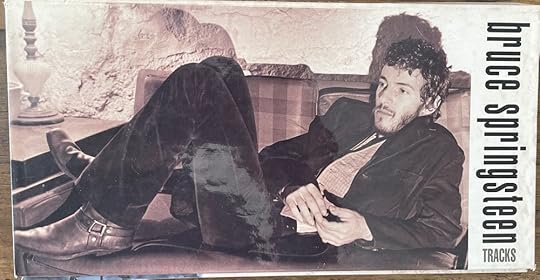
One of my two copies of ‘Tracks.’ Bought another one since a couple of CDs in the first set got scratched from too many nights of drunken handling.
The most revelatory songs on Tracks for me were the outtakes from what became Nebraska and Born in the USA, especially the title track from the latter, which musically finally matched the anger and disillusionment of the lyrics.
It also included “The Wish,” a song that spoke so close to the relationship between my mom and I, even down to the kitchen setting in the last verse, as that’s the place we’d all convene to sing, dance, and listen to new and old favorites of everyone from Merle Haggard to Otis Redding, Bob Dylan to Emmylou Harris, Willie Nelson to O.C. Smith.
Also included were now-classic b-sides including “Pink Cadillac” and “Stand On It” that had been covered by everyone from Natalie Cole to country singer Mel McDaniel.
The Essential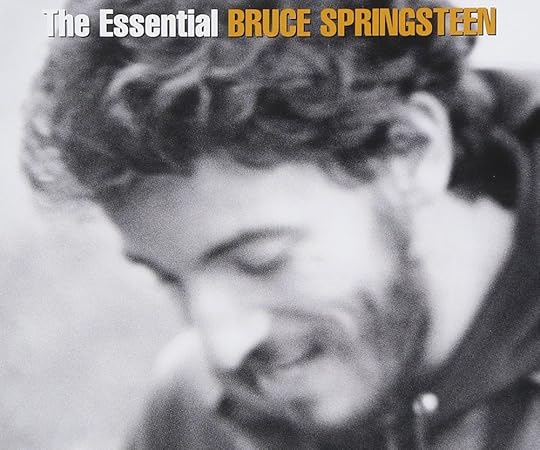
Five years later, almost to the day, on November 11, 2003 (just shy of my 33rd birthday, for those keeping count), The Boss’s turn on Sony BMG’s The Essential series was released, which included, naturally, all the essential tracks, but also a bonus disc of b-sides, soundtrack entries, and various odds-and-ends including (finally), “Trapped” as well as a song he’d given to Dave Edmunds (and also recorded by the Nitty Gritty Dirt Band), “From Small Things (Big Things One Day Come).”
Springsteen rebooted the E Street Band for The Rising in 2003 as well and embarked on another world tour, where I finally got to catch him in Raleigh at PNC Arena’s first show. It was well worth the wait and the hype. It was like church.
As I celebrate 51 years around the sun today, it’s quite amazing that Springsteen has played such a large part in my, well, growin’ up. So here’s to The Boss and may we both celebrate a few more years - and adventures - on this big old rock.
November 4, 2021
More New & Notable for Fall
Ten more tracks that are definitely worth a listen…
[image error]



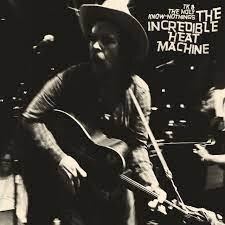
Yola - “Diamond Studded Shoes”
Whenever Yola sings, I can’t help but smile, even if I’m not aware of it right away. This is a stand-out on an album filled with them. From her latest, Stand For Myself.
Lindsey Buckingham - “Scream”
Oh, that crafty Buckingham. As soon as this gets going, it could be no one else. Driving, percussive guitar, weird overall vibe - it’s a glorious sound, as his the whole album.
FULL COUNTER! - “I Caught Myself”
NC duo Campbell Rodgers (vocals) and Alex Harris (backing vocals and everything else) deftly tackle this Paramore favorite down to the nth degree. It definitely whets the appetite for the originals that will be part of their debut full-length, set to be released December 17th, 2021.
Charley Crockett - “I Need Your Love”
I’ve been out of the loop, but now that I’ve finally caught up with this Charley Crockett guy, I dig it. The southern soul vibe on this slab of grease slides right inside my wheelhouse.
Anderson East - “Drugs”
Anderson East has evolved from raspy Americana soul crooner to white-funk disco daddy on his new album, Maybe We Never Die. That’s most apparent on this late ‘70s funktastic throwback.
Brandi Carlile - “Broken Horses
A highlight from her acclaimed new album, Carlile laid waste to this thing on SNL, complete with a shoutout to Elvis’ iconic gold lame suit and sneer. How does Brandi get cooler and cooler every damn day?
Waylon Payne - “7:28”
After making jaws drop all over Americanaland with Blue Eyes, The Harlot, The Queer, The Pusher & Me, he returns with The Lost Act Sessions - an addendum to that album that includes this arresting weeper.
TK & The Holy Know-Nothings - “Hell of a Time”
This one stopped me in my tracks. You can virtually hear this sitting confidently alongside the best songs of Townes Van Zandt, Guy Clark, Robert Earl Keen on a whacked-out late night radio station. The fact that these guys hail from Oregon makes it even more dumbfounding.
Dedicated Men of Zion - Can’t Turn Me Around
After that one, you may feel the need to be cleansed. I don’t blame you. You may need some Jesus. Or at least some Big James Barrett & The Golden Jubilees and a track from an astonishing compilation of Southern Gospel roof-raisers, Sacred Soul of North Carolina. Come get washed in the blood, y’all.
Bonnie Raitt - “Angel From Montgomery”
Finally, let’s wrap this up with a Bonnie Raitt delivering a new recording of this John Prine classic. It’s from a new Prine tribute album that includes Jason Isbell, Emmylou Harris, Brandi Carlile, Sturgill Simpson, and many others. Bonnie’s delivery is made all the more poignant with the passing of time and what’s been learned, loved, and lost along the way - by her and us.
October 28, 2021
New & Notable for Fall
Just some new stuff I’m digging at the moment.


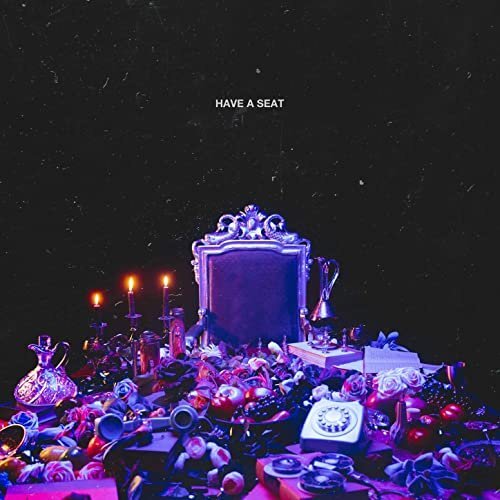
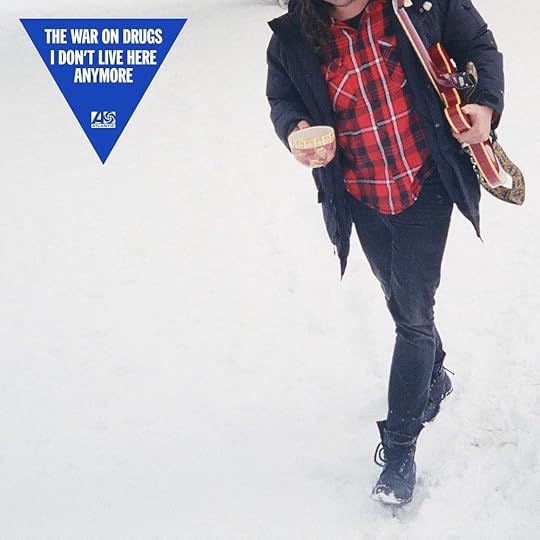

[image error]
Elvis Costello - “Magnificent Hurt”
The advance track from Elvis Costello’s forthcoming album, The Boy Named If (due January 2022) is a slab of classic Costello; driving, effervescent power pop at its finest.
Gov’t Mule - “Snatch It Back and Hold It”
One-time Costello collaborators Gov’t Mule tease their new album, Heavy Load Blues, with a barnstorming take on Junior Wells’ classic nod to James Brown by way of a Chicago Hoodoo blues joint.
Rolling Stones - “Fiji Jim”
Finally seeing its “official” release, this outtake from the Tattoo You sessions (it actually dates back to the Some Girls era) zeroes in on an insistent, incredible Charlie Watts groove, emphasizing what a loss they - and we - experienced with his passing this year.
The War On Drugs - “Living Proof”
The first taste of the latest War On Drugs’ brilliant new album, I Don’t Live Here Anymore, is the very definition of a slow-burner. Put it on and hit the gas. It’s the perfect escape for the daily commute.
Robert Plant & Alison Krauss - “High And Lonesome”
Plant, Krauss, and T Bone Burnette team up once again for the forthcoming Raise the Roof. Its second single emphasizes more of the classic Plant we all know and love.
Maggie Rose - “What Are We Fighting For”
The lead-off track from Rose’s stellar new album, Have A Seat, is all organ-drenched heartfelt soul and seductive persuasion. It doesn’t get any better.
Bellflower - “Let You Go”
Following up the hook-heavy “I’ll Show Up Tonight,” North Carolina’s Bellflower lays down a dark rockabilly beat under a melody that’s pure roots rock/Americana. Another infectious winner.
Adia Victoria with Jason Isbell and the 400 Unit - “The Truth”
From Isbell’s new covers album of all Georgia artists, Georgia Blue (so named in celebration of that state “turning blue” in the last election), Adia Victoria contributes a stunning take on Piedmont Blues legend Precious Bryant’s ode to coming clean and staying that way. One of the highlights of the year.
Billy Idol - “Bitter Taste”
Wait. Don’t scroll by. Yes, it’s Billy Idol, but take a listen. You’ll thank me. “Bitter Taste” is all atmosphere with gravitas. An older, wiser sneer.
Neil Young & Crazy Horse - Song of the Seasons
I miss Frank “Poncho” Sampedro, but Nils has had Neil’s back for over a half-century. The first single from the upcoming NY & Crazy Horse platter, Barn, is (thankfully) classic Neil.
Bonus Track: Bob Dylan - Don’t Fall Apart On Me Tonight
From the magnificent Springtime In New York, the latest entry in the Bootleg Series, which focuses on the years 1980-1985, this alternate take from Infidels’ closer offers up some fantastic footage featuring Sly & Robbie, Mark Knopfler, Mick Taylor, and his Bobness just doing what they do.
October 27, 2021
1991
The year where rock got angsty, country got Garthed, Prince was awash in Diamonds and Pearls, and hip hop gave us The Low End Theory.

[image error]
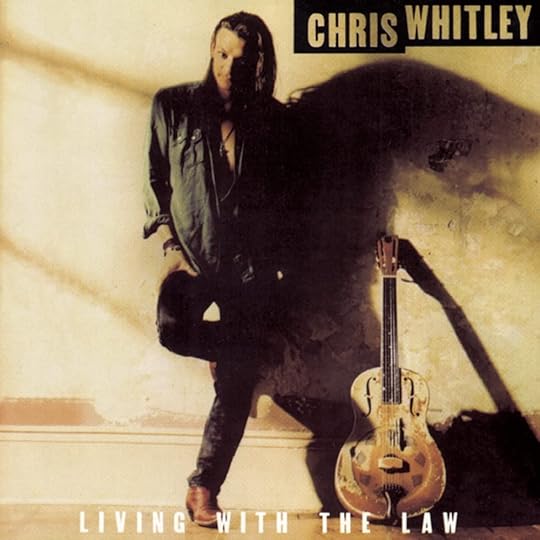
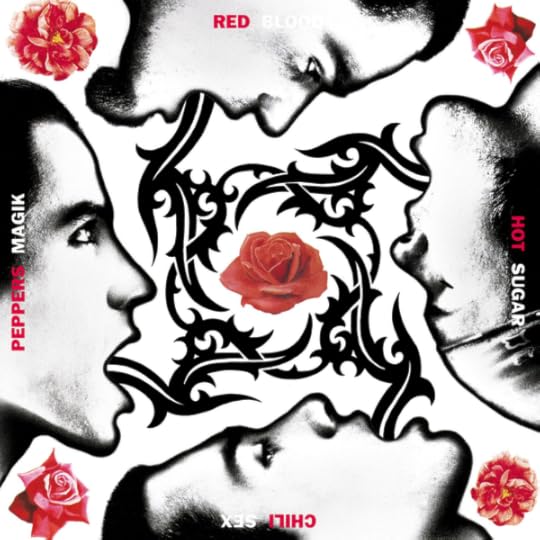
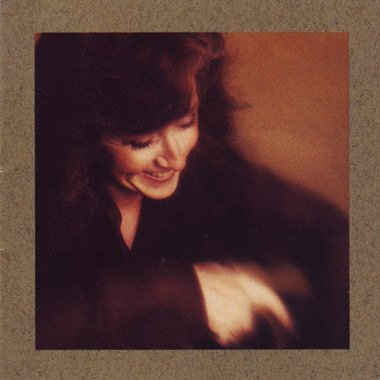
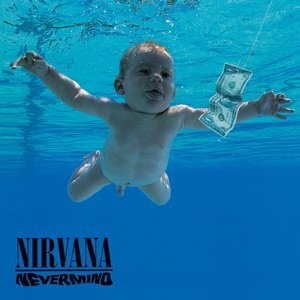
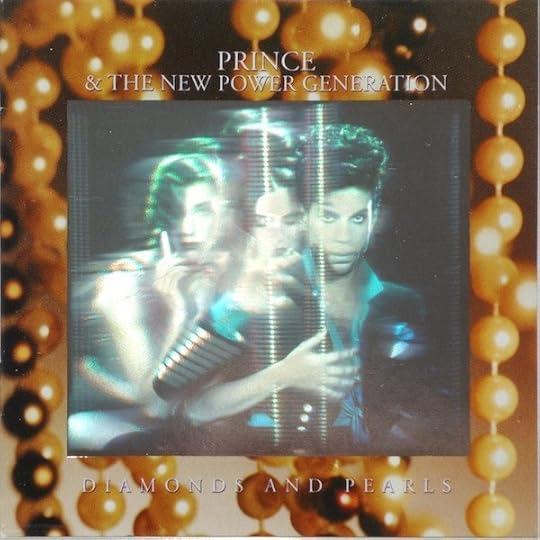


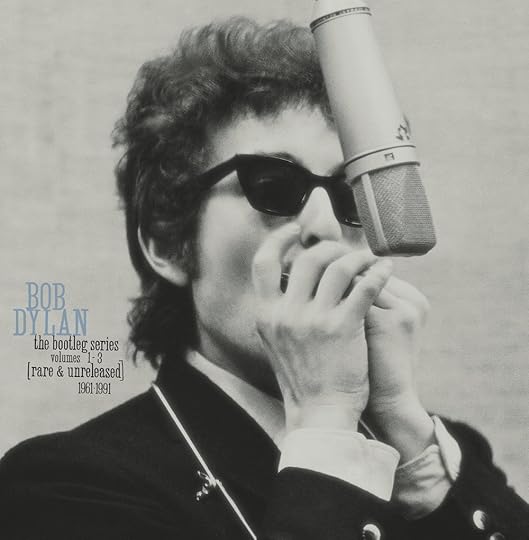

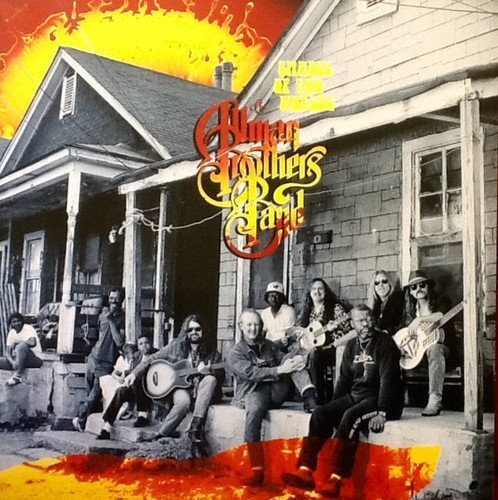
The culture that defines a decade rarely starts at the beginning of that particular ten year span. The ‘80s, musically anyway, really didn’t get underway until, say, 1984, for example. The ‘90s, however, hit the ground running by the fall of 1991, when three guys from the northwest almost single-handedly laid waste to an entire sub-genre of rock music. More on that later, though.
SoundScanAt the beginning of the 1990s, the music industry was booming like never before, and like it never would again. We were indeed in the midst of the last golden era of the music business as we’d come to know it. The big story that year, therefore, wasn’t Nirvana and Garth Brooks, it was Billboard and SoundScan.
In 1991 I was working in radio. In fact, that was the year I first became a Program Director. That was also when Billboard changed the way its charts were measured. SoundScan did what its name described: it calculated sales based on computer data and scanners - on hard data, in other words. Before then, what determined the charts was antiquated “call-out” research. Billboard would call record stores and ask what their biggest sellers were that week. Yes, Billboard had been basing their charts on that system for decades. So guess what? When SoundScan started tracking actual sales, eureka - everything changed.

Suddenly, albums were debuting at the number one position that would probably never have seen the summit before. It made radio and promotion people take notice, not to mention record labels. The buying public’s tastes were finally, and accurately, being reflected on the charts. That’s when they realized that country was bigger than anyone previously expected (Garth Brooks’s Ropin’ the Wind), as was hard rock (Skid Row’s Slave to the Grind was the first album to debut at number one in the SoundScan era) and rap, which would gain in exposure, credibility, and notoriety as 1991 rolled into 1992 and hip-hop’s golden era began.
Grunge n’ Roses [image error][image error]
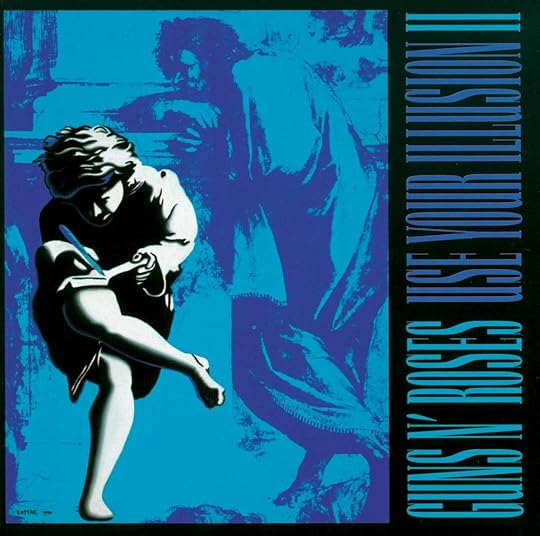
Released one week apart, two (three?) of the biggest releases of 1991 perfectly symbolized where rock had been and where it was headed.
Hard rock had been steadily building in mainstream popularity for the last seven or eight years, with Quiet Riot’s Metal Health album hitting number one in 1983 basically kicking off the hard rock era. After that, groups such as Motley Crue, Def Leppard, Bon Jovi, et al shared the airwaves of Top 40 radio and MTV with the likes of Prince, Madonna, and Michael Jackson. However, the riffs, hair, spandex, power ballads, and covers of classic rock and oldies evergreens formula had worn thin by 1991. It’s hard to pinpoint the shark-jumping moment exactly. Some point to 1988’s The Decline of Western Civilization, Part II: The Metal Years, Penelope Spheeris’s warts-and-all look at the Sunset Strip as the beginning of the end. Maybe it was simply the fact that the whole thing just got too ridiculous. Although what some called “bugglegum metal” arguably peaked in popularity in 1990, by the following year, it was apparent that the movement was losing steam - rapidly.
The saddest moment of ‘Decline’ undoubtedly belongs to W.A.S.P.’s guitarist Chris Holmes.
Most of the hard rock albums of 1991 were pale imitations of recent successes (Great White’s Hooked, L.A. Guns’ Hollywood Vampires), obvious contractual obligations (Poison’s Swallow This Live), or greatest hits packages. The only “big” moment for what became retro-fitted as “hair metal” in 1991 was Mr. Big’s formulaic power ballad, “To Be With You.,” now considered that subgenre’s last big gasp.
Of course, the biggest news of the year in hard rock overall was the wildly anticipated pair of double albums from Guns n’ Roses, Use Your Illusion I and II.
At midnight on September 17th, 1991, A friend and I found ourselves at a record store in Raleigh, NC with several other GnR insomniacs to grab both volumes. I left with each album on cassette, CD, and vinyl. (I rationalized it out in my just-shy-of-21-year-old brain, believe me.) We played all eight sides of that newly-acquired sleaze and bombast throughout the early hours of the morning.
It was no Appetite For Destruction.
It was the Tales from Topographic Oceans of hard rock if only that album had been a quadruple set, instead of merely a double. The Illusions were bloated, unfocused, redundant in spots (two versions of the unremarkable “Don’t Cry” with different lyrics, neither version revelatory), and - as has been pointed out ad nauseam by now, would have been much better pared down to one double album, if that. Axl Rose went from being the missing link between Mick Jagger, Iggy Pop, and Steven Tyler to having an Elton John complex - in just about three to four years’ time.
Coincidentally, such musical gluttony and pretentious padding caused a punk backlash against arena and prog-rock less than 20 years before. It was about to start all over again, and it was just a week away.
On September 24, exactly one week after the release of Use Your Illusion I and II, the same record label, Geffen, unleashed Nevermind, the second album by Seattle’s Nirvana. Geffen had no idea what was coming. Initial shipments sold out and they scrambled to press and ship more. It’s since been certified diamond (over ten million sold) and helped start a cultural revolution.
The rock landscape virtually changed overnight. Hair was cut, mousse discarded, spandex dry-rotted, high-pitched screams were replaced by low guttural moans. Casualties had to conform or be left behind. Those who conformed, however, rarely succeeded by adopting the new sound (Def Leppard’s Slang, anyone?).
Although I was right in the demo (Gen X) to be susceptible to this revolution, I never felt a kinship with it. In 1991, I was busy awaiting the next Black Crowes album and mourning the breakup of the Georgia Satellites. The stuff that did excite me that year, however, is coming up. But first…
1991: An Incomplete Overview (One Song Per Month - Pretty Much)The year began with Drivin N Cryin offering up what turned out to be their biggest-selling album, Fly Me Courageous. Bolstered by the title track, it was nowhere near the quality of their previous release - and masterwork - 1989’s Mystery Road, but it was still a fine album, and it was nonetheless fun to see them getting some long-overdue attention on mainstream rock radio and MTV.
In February, Queen offered up their final album with Freddie Mercury at the helm, the sprawling Innuendo. Mercury would be dead before the end of the year, making the track, “The Show Must Go On,” all the more poignant.
In March, former (and future) Bad Company vocalist Paul Rodgers and Faces/Who drummer Kenney Jones’ gave us their only album as Tne Law. It came off as turn-of-the-decade-era generic hard rock (in fact, “Miss You In A Heartbeat,” written by Def Leppard guitarist Phil Collen, first appeared here), but the Chris Rea cover (“Stone” featuring the guitars of both Rea and David Gilmour) and the undeniable “Laying Down the Law” are almost enough to redeem it.
While Yes had a family re-Union in April, the Rolling Stones gave us another live album with Flashpoint. Containing two new studio tracks, the Mick-funk of “Sex Drive” and Gulf War-era rocker, “High Wire” (which name-checked North Carolina’s 82nd Airborne Division).
We went Sailing the Seas of Cheese in May. Primus reminded us that rock could still have both a sense of humor and adventure.
Van Halen welcomed summer with their third Van Hagar-era effort, For Unlawful Carnal Knowledge, which included the insufferably ubiquitous “Right Now,” the immensely catchy “Top of the World,” and the typically adolescent “Poundcake.”
Tom Petty re-assembled the Heartbreakers in July and concluded his relationship with Jeff Lynne with the very ELO-sounding Into the Great Wide Open.
August was all about Metallica, retooling their sound and slowing the hell down, thereby becoming heavier than ever with their inescapable self-titled multiplatinum mega-hit.
Ok, August wasn’t all about Metallica because another band fronted by a guy with a serious Who fixation quietly released an album called Ten that would soon make quite a splash of its own.
The biggest month of 1991 as far as album releases was undoubtedly September. Record stores were flooded with new platters from Mariah Carey (Emotions), Bryan Adams (Waking Up the Neighbours), Red Hot Chili Peppers (Blood Sugar Sex Magik), Nirvana (Nevermind), Dire Straits (On Every Street), a Guns n’ Roses double shot (Use Your Illusions 1 and II), veteran acts such as Van Morrison (Hymns to the Silence), Robbie Robertson (Storyville), and Ozzy (No More Tears), the sophomore effort from A Tribe Called Quest (The Low End Theory), and a little bit of Rush rap (Roll the Bones).
October brought us more soldiers in the grunge revolution. This time, it was Soundgarden with Badmotorfinger, while Prince abandoned the Revolution to celebrate his New Power Generation with Diamonds and Pearls, and Matthew Sweet pined for his Girlfriend.
Michael Jackson returned with Dangerous in November, which also saw new efforts from U2 (Achtung Baby), 2Pac (2Pacalypse Now), and Genesis (We Can’t Dance).
Ironically, the year that saw rise to one of the biggest musical revolutions in decades ended with a whimper, with the only release of note in December belonging to Green Day - a band whose breakthrough would not come out until 1994. Kerplunk, however, was the first album to include dummer Tre Cool and it pointed the way to the sound that would define them for the rest of their career.
The Best of the YearHere they are, and yes, they’re ranked; the best albums of 1991, regardless of genre or popularity - or impact for that matter. These are the albums that still sound just as powerful and stir just as much emotion as they did when I first heard them.
20. Frank Zappa - (Three-way Tie) The Best Band You Never Heard In Your Life; Make. A Jazz Noise Here; You Can’t Do That On Stage Anymore, Vol. 4.
[image error]

Frank Zappa spent the year giving us what we’d missed: two volumes of live material from the 1988 lineup and the ill-fated tour they embarked upon. (It had been partially documented already on Broadway the Hard Way). He also released the fourth volume of his ongoing You Can't’ Do That On Stage Anymore series, which gathered performances ranging from a 1969 gig at the Fillmore to the 1984 tour. All in all, it was a great year to be a Zappa fan. Little did we know he only had two more short, but productive, years with us.
19. Bob Seger and the Silver Bullet Band - The Fire Inside
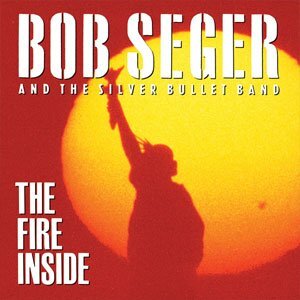
No, it doesn’t measure up to his run of late-’70s classics, much less his late-’60s/early ‘70s period, but this, like all of Seger’s albums, has its moments. He deftly covers two Tom Waits chestnuts, but the self-penned title track is the towering achievement, containing some of Seger’s most powerful lyrics fueled by E Streeter Roy Bittan’s driving piano.
18. Blues Traveler - Travelers & Thieves
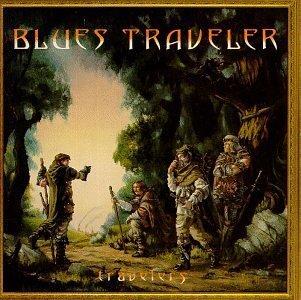
While Blues Travelers’ debut seemingly came from out of nowhere, as good as it was, it still flew under the radar of most. Unfortunately, it would be a few more years and a couple more albums until they’d hit it big. In the meantime, however, their second is still their best. Kicking off with the appropriately-named “Onslaught,” the rest of the album lives up to that title.
17. John Lee Hooker - Mr. Lucky

After a half century of laying down the boogie he invented, Hooker unexpectedly struck Grammy gold with the star-studded The Healer. He followed it up with Mr. Lucky, a more pared-down affair, although big-name talent still contributes, (including a sublime duet with Van Morrison). Its funkiest moment is “This Is Hip,” featuring essentially the Little Village lineup (Ry Cooder, Nick Lowe, Jim Keltner) without John Hiatt. Boogie Chillen!
16. Red Hot Chili Peppers - Blood Sugar Sex Magik
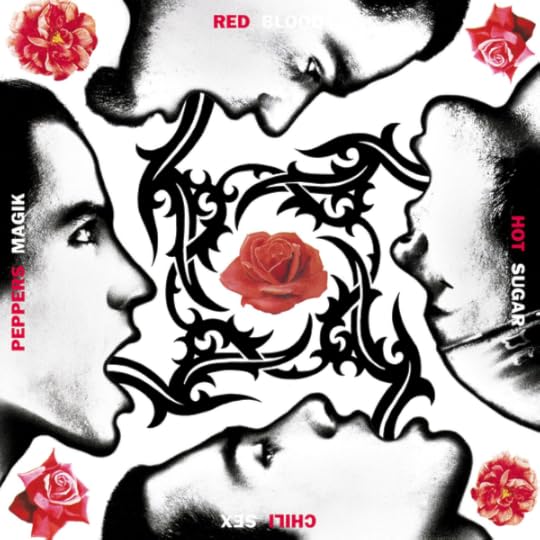
BSSM was basically everywhere in 1991, and Rick Rubin’s production, as always, puts everything directly in your face. It’s loud, obnoxious, ridiculously juvenile, and fun.
15. Hal Ketchum - Past the Point of Rescue
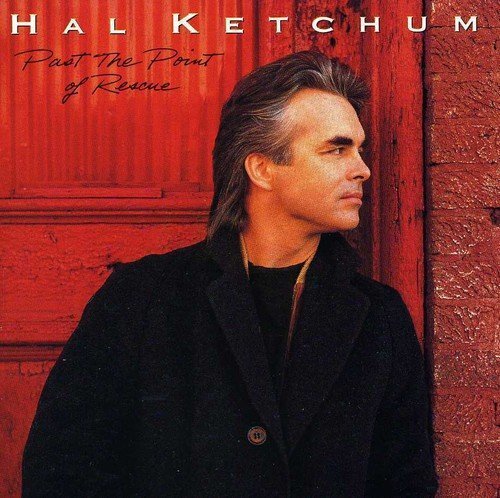
In a year where Garth Brooks’ Ropin’ the Wind and Brooks & Dunn dominated both the country charts and airwaves, Hal Ketchum’s debut was an obvious standout. His rich, soulful vocals were the antidote to the affected twang that was all over the radio that year. The album’s ominous title track and the captivating “I Know Where Love Lives” were like breaths of fresh air in the era of the boot scoot.
14. A Tribe Called Quest - The Low End Theory
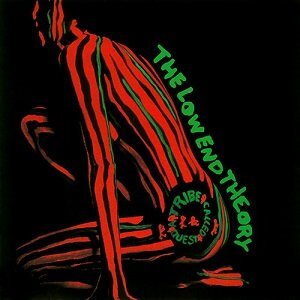
A Tribe Called Quest’s second album was also their masterpiece. Fusing jazz with soul, hip-hop, and just plain other-worldly grooves and intricate rhymes, The Low End Theory is deservedly considered a milestone not only in hip-hop but in alternative music as a whole.
13. Marc Cohn - Marc Cohn

“Walking In Memphis” got all the love and attention, but this slow burner of a debut is captivatingly hypnotic throughout. That he attempts a Willie Dixon number a capella - and succeeds - speaks volumes. The real stunner here, though, is the spellbinding “Ghost Train.” It’s all organ, soul, sweat, and regret. Hop on board.
12. Prince - Diamonds and Pearls

While Purple Rain, Sign o’ the Times, and 1999 get all the love (and deservedly so), Diamonds and Pearls is an amazingly consistent album from start to finish, touching on a dizzying array of styles and moods. “Gett Off” is pure fun, the title track is rich in its complexity, and “Cream” is the best T. Rex song Marc Bolan didn’t create himself.
Sha-doobie bop.
11. R.E.M. - Out Of Time

In 1991, R.E.M. delivered big time, the stunning Out Of Time. Sounding more of a piece with their pre-superstar days on I.R.S., the album contains some of their most beautiful melodies and arrangements, that sound, as the album’s title perfectly states, out of time.
10. U2 - Achtung Baby

Achtung Baby was inescapable in 1991, and for good reason. It jumpstarted U2’s mid-career phase. All their output that followed in the ‘90s was built upon the innovations perfected here. Looking back, the grooves, production, arrangements, and performances still thrill, while “One” remains among the best songs of the decade.
9. Warren Zevon - Mr. Bad Example

Warren Zevon welcomed the 1990s with the same sardonic outlook as always. The title track is the Excitable Boy all grown up, and a precursor to our current political landscape. Opening with the brazen kiss-off “Finishing Touches” and closing with the cautiously hopeful “Searching For A Heart,” it’s an album delivered by a voice that hopes for the best, but is old enough to know better.
8. Neil Young & Crazy Horse - Weld
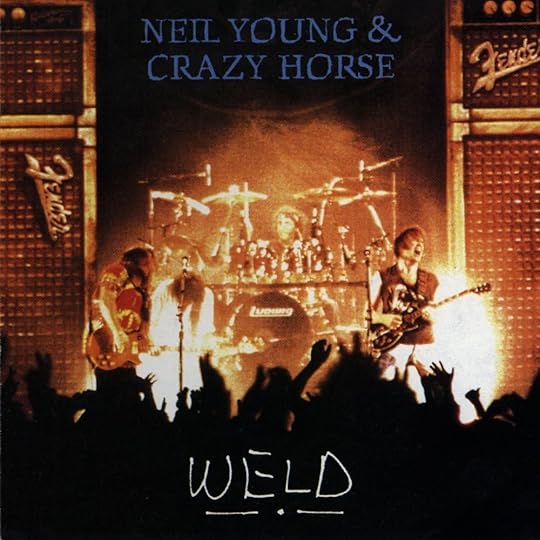
Yes, Live Rust is a classic, but it pales in comparison to the sheer onslaught of Weld. Unlike its predecessor, there’s no acoustic side or oasis to be found - just sheer intensity throughout. As if to drive the point home, it was paired originally with an extra CD called Arc that was just a half-hour of feedback edited into a weird, disjointed sound collage. Smell the Horse indeed.
7. Robbie Robertson - Storyville
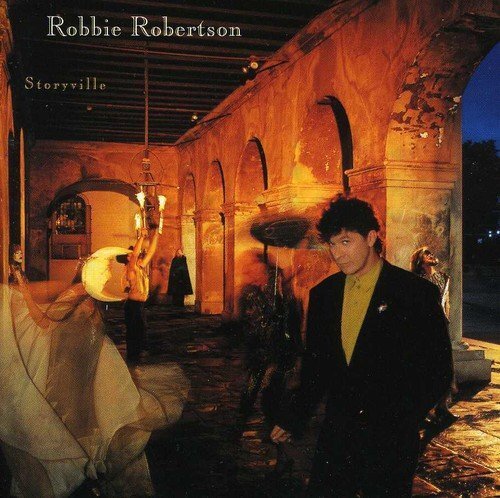
A loose concept based around the storied former red-light district of New Orleans. Robertson’s second solo album is more about atmosphere and sound than an actual storyline. The entire album is drenched in sweat and humidity. There may be danger lurking in the shadows, but there’s a visceral and sexual thrill attached that makes it all worth the risk.
6. Dire Straits - On Every Street

How do you follow up the biggest album of your career, a multi-platinum cultural milestone of the ‘80s? You don’t, until the next decade. At least that’s what Mark Knopfler decided to do with the laid-back beauty of On Every Street. That it didn’t match Brothers In Arms’ success is a given. The fact that it was actually a better album made its lukewarm reception all the more frustrating.
5. Van Morrison - Hymns to the Silence

On one hand, you could call the sublime Hymns to the Silence the completion of Van Morrison’s spiritual journey, since it closed out a run of albums that thematically stretched back to the whole of the previous decade. We all know, however, such journeys never end. Although he turned more towards blues and jazz arrangements after this double album, Van’s quest for enlightenment continues.
4. The Allman Brothers Band - Shades Of Two Worlds
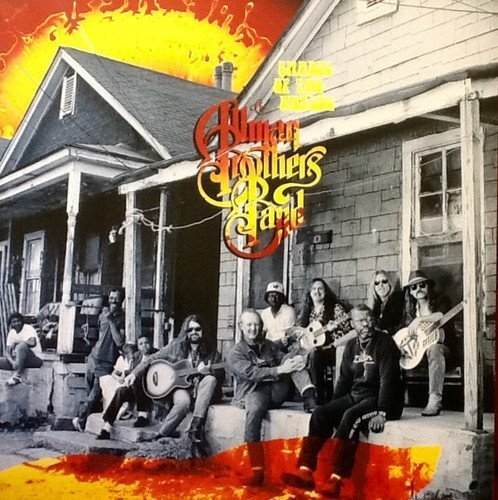
Quite possibly the greatest “comeback” story in rock in terms of overall consistent quality, the Allman Brothers Band continued their rebirth by doubling down on what made the previous Seven Turns worth the wait while besting it at the same time. On Shades, the songs are longer, the themes darker, and the blues hover over every note. The hunger’s still there and it’s palpable.
3. Bonnie Raitt - Luck of the Draw
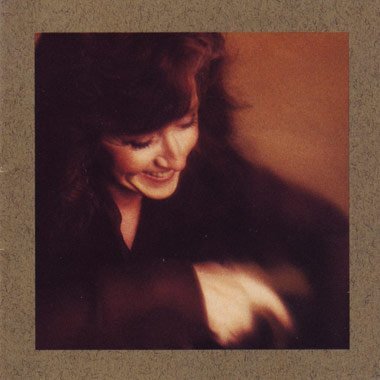
Bonnie Raitt finally received the accolades she’d been deserving for nearly twenty years with Nick of Time. Its follow-up, Luck of the Draw, however, is the better album. Once again teaming with Don Was, Raitt picks nothing but stellar material while inviting both John Hiatt and Delbert McClinton to the party. What’s not to love?
2. Bob Dylan - The Bootleg Series Vols. 1-3
[image error]I usually don’t include compilations on “best of year” lists, but come on. This collection was a major event, and it spawned thirty years (and counting) of an ongoing series that still has plenty to mine. A few of the outtakes from this set have since become classics in their own right. (Imagine a world now without “Blind Willie McTell.”)
1. Chris Whitley - Living With the Law
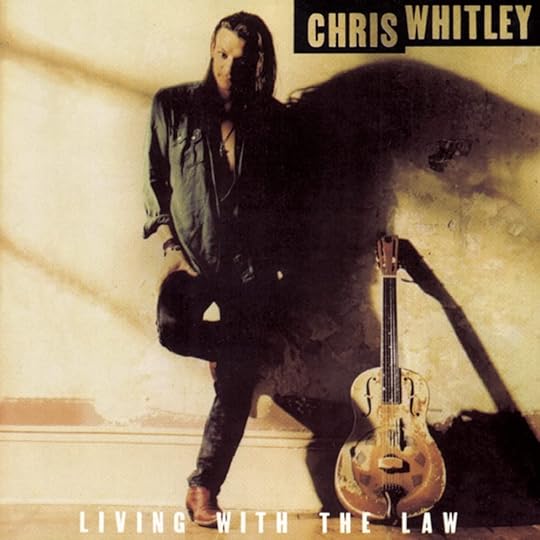
In spite of all the new sounds and groundbreaking moments that 1991 brought us, its best album seemingly came from outer space - or out of the dust. At the risk of looking lazy, I’ll defer to what I wrote in Albumism: “Hellhounds are on Whitley's trail throughout this masterpiece. It was his debut, but there was already a sense of time running out. Darkness surrounds its borders, but its raw beauty is unrelenting. Dirt, abandoned cars, dilapidated shacks, dusty tools scattered about—this is an album that sounds like no other from an artist that was both behind, and ahead, of his time.”
October 18, 2021
‘Lately’ Is Lilly Hiatt’s Subtle Masterpiece
Singer-Songwriter follows up the brilliant Walking Proof with a much more intimate, but no less powerful, set of stunners.

Lilly Hiatt, like most of us, spent much of 2020 and 2021 in a restless state. So she made the most of it. She gathered her band (Mike LoPinto, guitar; Robert Hudson, bass; Kate Haldrup, drums; Micah Hulscher, keys; and Steve Hinson, pedal steel; with Coley Hinson pitching in with his guitar on two tracks) and they set about recording what became Lately, the singer-songwriter’s fifth full-length on New West Records.
Lately could be heard initially as the sound of isolation. Its guitars, steel and otherwise, are awash in reverb, giving the entire affair a dreamlike soundscape. Hints of ‘90s post-grunge appear throughout, riding under Hiatt’s captivating vocals. On subsequent listens, however, the sound opens up and goes deeper. Those guitars offer hope amidst these uncertain times while they jangle and crunch their way throughout these ten surreal tracks.
Highlights are difficult to pick, since each track is worthy in its own right, but they include the nocturnal beauty of “Ride,” where the narrator recounts the simple wonder of taking a ride with a (past?) lover/friend, and the driving “Face,” powered by Steve Hinson’s effervescent pedal steel work.
Lately ends with the magnificent “Last Tear.” The joy in the performance makes you wish there was much more than just over a half-hour of music to experience here, but the best albums - just like live performances - should always leave you wanting more.



